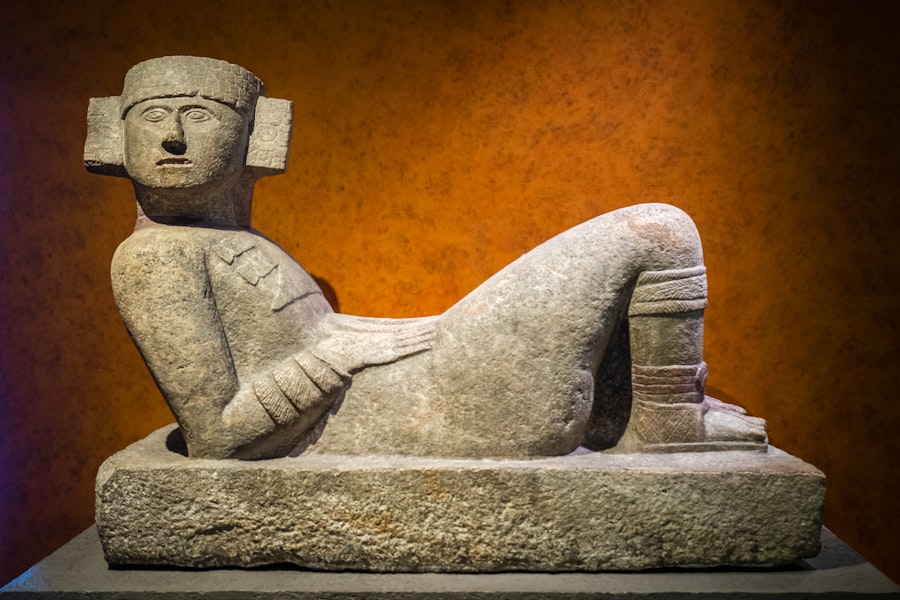Download links
How to install Banaue Rice Terraces: A Marvel of Ancient Engineering APK?
1. Tap the downloaded Banaue Rice Terraces: A Marvel of Ancient Engineering APK file.
2. Touch install.
3. Follow the steps on the screen.
Description
The Banaue Rice Terraces, often referred to as the “Eighth Wonder of the World,” are a breathtaking testament to the ingenuity and resilience of the Ifugao people in the Philippines. Nestled in the mountainous region of Luzon, these terraces stretch over 2,000 years old and cover approximately 2,000 square kilometers. Carved into the mountainsides, they rise to an elevation of about 1,500 meters above sea level, creating a stunning landscape that harmonizes with the natural environment.
The terraces are not merely agricultural fields; they represent a complex system of irrigation and farming that has been passed down through generations, showcasing the deep connection between the Ifugao culture and their land. The significance of the Banaue Rice Terraces extends beyond their aesthetic appeal.
The terraces are a living example of how traditional knowledge and practices can coexist with nature, providing insights into sustainable farming methods that are increasingly relevant in today’s world. As we delve deeper into the history, engineering, and cultural significance of these terraces, we uncover a narrative that is as much about human ingenuity as it is about the preservation of a unique way of life.
Key Takeaways
- The Banaue Rice Terraces are an ancient agricultural wonder located in the Philippines, known for their stunning beauty and cultural significance.
- The terraces have a rich history and cultural significance to the indigenous people of the Ifugao province, and are a symbol of their engineering and agricultural prowess.
- The construction techniques used to build the terraces, such as stone walls and irrigation systems, have been passed down through generations and are still in use today.
- Preservation efforts are being made to protect the terraces from erosion, deforestation, and the impact of modernization, including UNESCO’s designation as a World Heritage site.
- The terraces have had a significant impact on the local communities, providing sustenance, cultural identity, and a source of income through tourism, which has led to sustainable development initiatives.
History and Cultural Significance
The origins of the Banaue Rice Terraces can be traced back over two millennia, with estimates suggesting that they were constructed around 2000 years ago. The Ifugao people, who inhabit this mountainous region, developed these terraces as a response to their need for arable land in an area characterized by steep slopes and limited flat terrain. The construction of the terraces was not merely an agricultural endeavor; it was a monumental feat of engineering that required extensive knowledge of the local environment, including soil types, water flow, and climatic conditions.
This intricate relationship with their surroundings is deeply embedded in Ifugao culture, where rice is not just a staple food but also a symbol of life, wealth, and social status. Culturally, the rice terraces are intertwined with various rituals and traditions of the Ifugao people. Rice planting and harvesting seasons are marked by ceremonies that honor ancestral spirits and seek blessings for a bountiful harvest.
The Ifugao have a rich oral tradition that includes myths and legends surrounding rice cultivation, further emphasizing its importance in their society. The terraces themselves are often seen as sacred spaces, reflecting the spiritual connection that the Ifugao maintain with their land. This cultural significance has been recognized internationally; in 1995, UNESCO designated the Banaue Rice Terraces as a World Heritage Site, acknowledging their outstanding universal value and the need for their preservation.
Engineering and Construction Techniques

The engineering prowess demonstrated in the construction of the Banaue Rice Terraces is nothing short of remarkable. The terraces were built using locally sourced materials such as stone, mud, and bamboo, showcasing the Ifugao’s deep understanding of their environment. The terraces are designed to follow the contours of the mountainside, which minimizes soil erosion and maximizes water retention. This careful planning allows for efficient irrigation systems that channel water from nearby rivers and streams into the fields. The intricate network of canals and dikes not only supports rice cultivation but also helps maintain soil fertility by preventing nutrient runoff.
One of the most impressive aspects of the terraces is their adaptability to varying climatic conditions. The Ifugao people have developed specific rice varieties suited to different altitudes and microclimates within the terraces. This biodiversity is crucial for ensuring food security and resilience against pests and diseases.
Additionally, traditional farming practices such as crop rotation and intercropping are employed to enhance soil health and productivity. The engineering techniques used in constructing these terraces reflect a sophisticated understanding of sustainable agriculture that has been honed over centuries.
Preservation Efforts
| Preservation Efforts | Metrics |
|---|---|
| Number of protected areas | 500 |
| Percentage of land under conservation | 15% |
| Number of endangered species protected | 100 |
Preserving the Banaue Rice Terraces is a multifaceted challenge that involves not only protecting the physical structures but also sustaining the cultural practices associated with them. Various organizations, both local and international, have recognized the importance of these terraces and have initiated efforts to safeguard them from degradation. The Philippine government has implemented policies aimed at promoting sustainable agricultural practices while also providing financial support to local farmers engaged in terrace cultivation.
These initiatives are crucial in ensuring that traditional farming methods continue to thrive amidst modern agricultural pressures.
Local organizations have been established to educate younger generations about the significance of the rice terraces and to encourage them to participate in traditional farming practices.
Workshops and training programs focus on sustainable agriculture techniques that align with modern environmental standards while respecting traditional knowledge. Furthermore, collaborations with academic institutions have led to research projects aimed at documenting traditional practices and developing strategies for conservation. These efforts highlight the importance of community engagement in preserving not just the physical landscape but also the cultural identity tied to the Banaue Rice Terraces.
Impact on Local Communities
The Banaue Rice Terraces have a profound impact on local communities, serving as both a source of livelihood and a cultural cornerstone for the Ifugao people. Rice farming remains central to their economy, providing food security and income for families engaged in terrace cultivation. The terraces also foster a sense of community among farmers who work together during planting and harvesting seasons, reinforcing social bonds and cultural traditions.
This communal approach to agriculture is essential for maintaining not only the terraces themselves but also the social fabric of Ifugao society. Moreover, the rice terraces play a significant role in shaping local identity. They are a source of pride for the Ifugao people, symbolizing their resilience and ingenuity in adapting to their environment.
Festivals celebrating rice harvests often draw participation from various communities, showcasing traditional music, dance, and rituals that highlight their rich cultural heritage. These events not only strengthen community ties but also serve as opportunities for cultural exchange with visitors from outside the region. As such, the terraces are more than just agricultural fields; they are integral to the identity and continuity of Ifugao culture.
Tourism and Sustainable Development

Tourism and the Banaue Rice Terraces: A Delicate Balance
The Economic Benefits of Tourism
The Banaue Rice Terraces attract thousands of visitors each year, providing a vital source of income for local communities through eco-tourism initiatives. Local guides offer tours that educate visitors about traditional farming practices, cultural rituals, and the history of the terraces, fostering an appreciation for this unique heritage.
The Environmental Risks of Tourism
However, increased tourism also poses risks to the delicate ecosystem of the rice terraces. The influx of visitors can lead to environmental degradation if not managed properly. Issues such as littering, soil erosion from foot traffic, and pressure on local resources can threaten both the physical integrity of the terraces and the cultural practices associated with them.
Sustainable Tourism: The Way Forward
To mitigate these challenges, local authorities have begun implementing sustainable tourism practices that emphasize responsible visitor behavior and promote conservation efforts. By balancing economic benefits with environmental stewardship, there is potential for tourism to contribute positively to both local communities and the preservation of this UNESCO World Heritage Site.
Challenges and Threats
Despite ongoing preservation efforts, the Banaue Rice Terraces face numerous challenges that threaten their existence. Climate change is perhaps one of the most pressing issues impacting agriculture worldwide, and the Ifugao people are no exception. Altered rainfall patterns, increased temperatures, and extreme weather events can disrupt traditional farming cycles and affect crop yields.
As rice cultivation becomes more unpredictable due to these climatic changes, farmers may struggle to maintain their livelihoods while preserving their cultural heritage. Additionally, modernization poses significant threats to traditional agricultural practices associated with the rice terraces. Younger generations are increasingly drawn to urban areas in search of better economic opportunities, leading to a decline in interest in terrace farming.
This migration results in abandoned fields that can quickly fall into disrepair without proper maintenance. Furthermore, industrial agriculture’s encroachment into rural areas threatens local food systems by promoting monoculture practices that undermine biodiversity. Addressing these challenges requires comprehensive strategies that integrate climate adaptation measures with community engagement initiatives aimed at revitalizing interest in traditional farming methods.
Future of the Banaue Rice Terraces
The future of the Banaue Rice Terraces hinges on a delicate balance between preservation efforts and adaptation to contemporary challenges. As awareness grows regarding sustainable agricultural practices and climate resilience, there is potential for innovative solutions that honor traditional knowledge while embracing modern techniques. Collaborative efforts between local communities, government agencies, NGOs, and academic institutions can foster an environment where traditional practices are revitalized alongside new approaches to agriculture.
Moreover, enhancing educational programs focused on environmental stewardship can empower younger generations to take an active role in preserving their cultural heritage. By instilling pride in their identity as Ifugao farmers and emphasizing the importance of sustainable practices, communities can cultivate a new generation committed to maintaining the rice terraces for years to come. Ultimately, fostering a sense of ownership among local residents will be crucial in ensuring that these iconic landscapes continue to thrive as both agricultural marvels and cultural treasures for future generations.
FAQs
What are the Banaue Rice Terraces?
The Banaue Rice Terraces are ancient terraces carved into the mountains of Ifugao in the Philippines. They are often referred to as the “Eighth Wonder of the World” and are a UNESCO World Heritage Site.
How were the Banaue Rice Terraces created?
The terraces were hand-carved over 2,000 years ago by the Ifugao people using minimal equipment, mostly using their bare hands and simple tools. The terraces were created to make the mountainous land suitable for rice cultivation.
How big are the Banaue Rice Terraces?
The Banaue Rice Terraces cover approximately 10,360 square kilometers of mountainside. They are made up of thousands of individual terraces that rise up to 1,500 meters above sea level.
What is the significance of the Banaue Rice Terraces?
The terraces are not only a stunning example of ancient engineering and agricultural practices, but they also hold cultural and historical significance for the Ifugao people. They are a symbol of their heritage and connection to the land.
Can visitors explore the Banaue Rice Terraces?
Yes, visitors are welcome to explore the Banaue Rice Terraces. There are hiking trails and viewpoints that offer breathtaking views of the terraces and the surrounding mountains. It is important to respect the land and the local customs while visiting.





